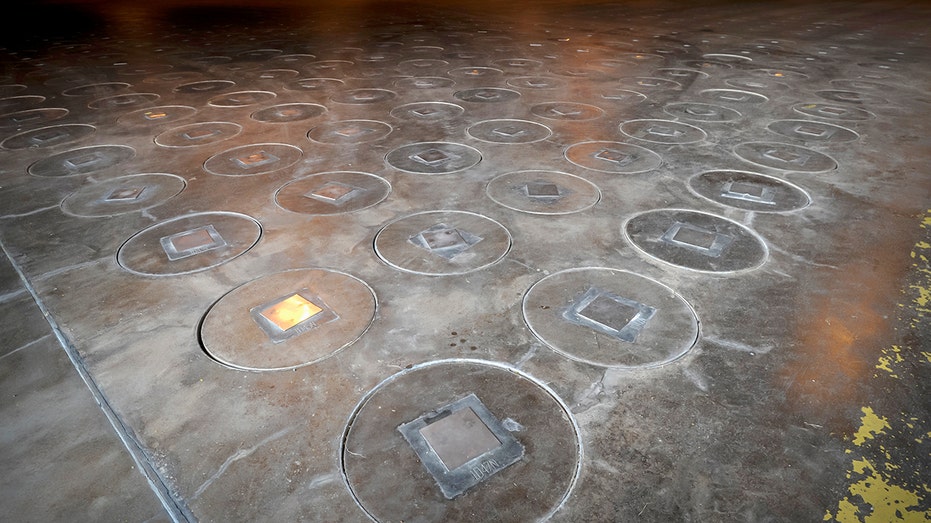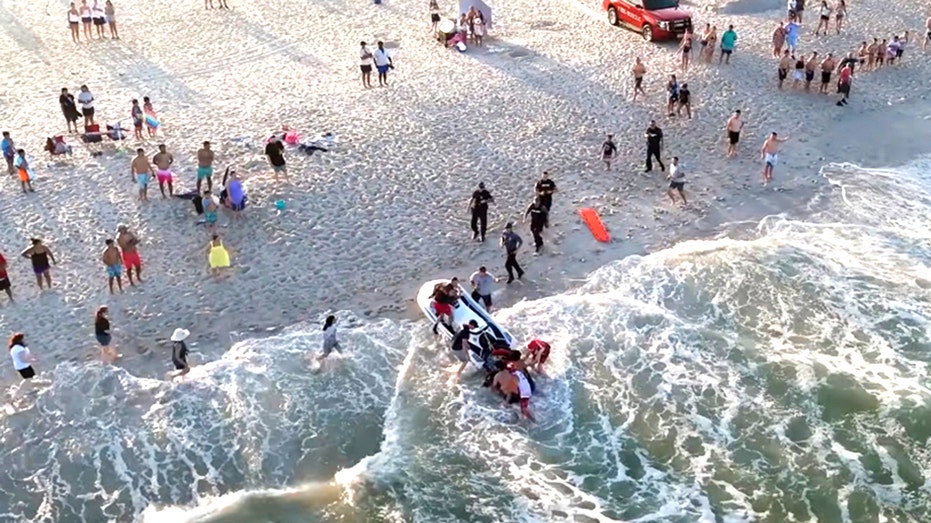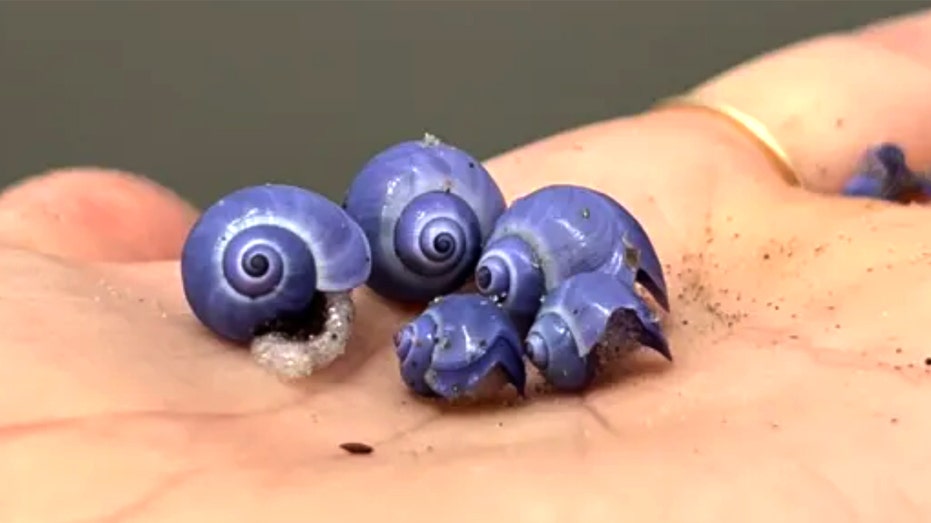Radioactive Wasp Nest at Nuclear Site: Unpacking the Deeper Implications

Sarah Johnson
August 10, 2025
Brief
Analysis of the radioactive wasp nest discovery at the Savannah River Site, highlighting implications for nuclear waste management and environmental safety. Focus on legacy challenges.
Radioactive Wasp Nest: A Symptom of Lingering Nuclear Waste Challenges
Opening Analysis: The discovery of a radioactive wasp nest at the Savannah River Site (SRS) is more than just a bizarre news item. It's a stark reminder of the enduring challenges and potential risks associated with the legacy of nuclear weapons production and the ongoing management of nuclear waste. This seemingly isolated incident raises critical questions about environmental monitoring, containment effectiveness, and long-term ecological impact at nuclear sites across the country.
The Bigger Picture: The Savannah River Site, established in the early 1950s at the dawn of the Cold War, played a pivotal role in the production of nuclear materials for the U.S. defense program, specifically tritium and plutonium-239. Over decades of operation, the site accumulated a vast amount of radioactive waste, stored in underground tanks. While the SRS mission has shifted to nuclear fuel production and waste cleanup, the legacy of its past remains a pressing concern. The site contains millions of gallons of liquid nuclear waste, a byproduct of its earlier production activities. This waste poses a long-term environmental risk, requiring constant monitoring and careful management. Instances like the radioactive wasp nest highlight the potential for unforeseen contamination pathways and the need for robust safety measures.
What This Really Means: The presence of a wasp nest with radiation levels ten times higher than permitted raises several critical concerns. First, it indicates a potential pathway for radioactive contamination to spread beyond the immediate vicinity of the waste tanks. Wasps, foraging for food and building materials, can inadvertently transport radioactive particles to other areas, potentially impacting the local ecosystem. Second, it highlights the limitations of current monitoring systems. If a radioactive wasp nest was discovered during a routine check, it begs the question: what other undetected contamination may be present? The lack of detailed information in the initial report, as pointed out by Savannah River Site Watch, further fuels these concerns. The public deserves transparency regarding the source of contamination and any potential leaks from waste tanks. This incident also underscores the need for proactive and comprehensive environmental monitoring programs that go beyond routine checks, potentially including biological indicators to detect contamination pathways.
Expert Perspectives: Experts in nuclear safety and environmental remediation emphasize the importance of comprehensive risk assessments and long-term monitoring at sites like SRS. According to Dr. Arjun Makhijani, president of the Institute for Energy and Environmental Research, "Incidents like this underscore the need for continuous vigilance and robust oversight. The long-term management of nuclear waste requires not just technological solutions, but also a commitment to transparency and public engagement." Similarly, Dr. Kate Brown, an environmental historian and expert on the Chernobyl disaster, notes that "Radioactive contamination can manifest in unexpected ways, and the long-term ecological consequences are often poorly understood. A seemingly minor incident like a radioactive wasp nest can be a harbinger of more significant problems." The concerns raised by Tom Clements, Executive Director of Savannah River Site Watch, highlight the need for full transparency from the Department of Energy regarding the source and extent of radioactive contamination at the site.
Data & Evidence: The Savannah River Site has produced over 165 million gallons of liquid nuclear waste. While evaporation has reduced this volume to approximately 34 million gallons, the remaining waste represents a significant long-term environmental challenge. The discovery of three additional contaminated wasp nests since highlights a repeating pattern of radioactive contamination outside of what is considered the waste grounds. The U.S. Government Accountability Office (GAO) has issued multiple reports over the years highlighting challenges in managing nuclear waste, including cost overruns, schedule delays, and technological uncertainties. These reports underscore the complexity and long-term commitment required to address the legacy of nuclear weapons production. Data on radiation levels in the surrounding environment, including soil and water samples, are crucial for assessing the potential impact of radioactive contamination on the local ecosystem and human health. Specific isotope analysis of the radioactive material found in the wasp nest could help pinpoint the source of contamination and identify potential leakages from specific tank farms. This data would aid in developing targeted remediation strategies and preventing future incidents.
Looking Ahead: The incident with the radioactive wasp nest should serve as a catalyst for re-evaluating environmental monitoring protocols and waste management strategies at the Savannah River Site and similar facilities. The focus should be on identifying and mitigating potential contamination pathways, enhancing transparency, and engaging with local communities to address concerns. Future investigations should include detailed isotopic analysis to determine the source of the contamination, comprehensive environmental surveys to assess the extent of contamination, and proactive measures to prevent future incidents. Monitoring wildlife, including insects, around nuclear sites could serve as an early warning system for potential contamination. Continuous research and development of innovative waste treatment technologies also play a crucial role in minimizing the long-term risks associated with nuclear waste.
The Bottom Line: The radioactive wasp nest at the Savannah River Site is a concerning symptom of the ongoing challenges related to nuclear waste management. It underscores the importance of continuous vigilance, robust monitoring, transparency, and proactive measures to protect the environment and public health. While officials claim 'no impact' the question remains, how many more radioactive wasp nests exist on the 310 square mile site? While seemingly minor, such incidents highlight the enduring legacy and potential risks associated with nuclear production that must not be ignored by responsible policymakers.
Topics
Editor's Comments
The official statements emphasizing 'no impact' and containment, while reassuring, often downplay the systemic issues. The discovery of multiple radioactive wasp nests at SRS invites a closer examination of the site's infrastructure. Are the containment measures sufficient? Is there an urgent need for improved monitoring systems? And should there be mandatory, transparent investigations into the root causes? The narrative of 'no immediate danger' can hinder necessary long-term solutions.
Like this article? Share it with your friends!
If you find this article interesting, feel free to share it with your friends!
Thank you for your support! Sharing is the greatest encouragement for us.






